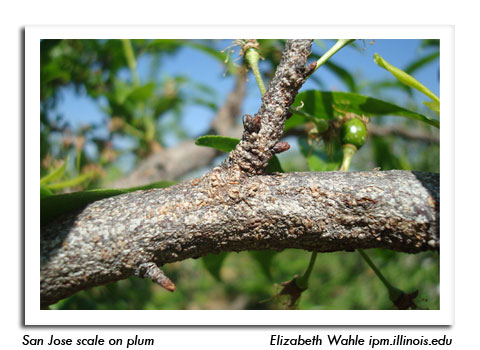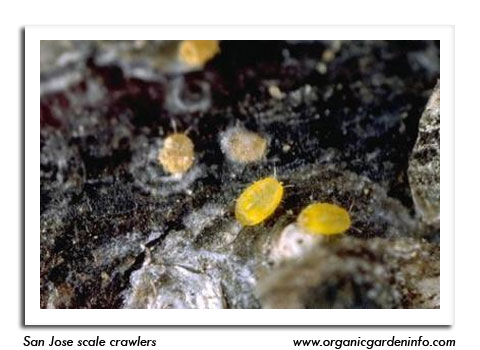
 |
|
|
Fruits
Volume 58 Number 10 Date 07/11/2013 APPLE MAGGOT - Emergence was reported from apple orchards in Mineral Point, Plymouth and Rosendale where 1-3 flies were captured on traps from July 4-10. The first apple maggot spray should be applied 7-10 days after the first fly appears on a yellow sticky trap and immediately if the fly is found on a red sphere, with later sprays following at 10- to 14-day intervals as long as flies are collecting on traps. As a reminder, the adult apple maggot differs from similar fruit flies by having an F-shaped band on the wings and a pronounced white thoracic spot. The economic threshold for apple maggot control is one fly per unenhanced trap per week or five flies per enhanced trap per week. CODLING MOTH - The spring flight of moths declined in most orchards and continued at a few locations. The summer flight is expected to begin in the next 1-2 weeks. Apple growers are advised to check their records for the spring biofix to estimate the second biofix, which generally occurs 1,000 degree days (base 50°F) later in a typical year. Approximately 800-950 degree days have accumulated since the first biofix was set in from May 19-29. In preparation for the summer flight, growers should replace pheromone lures and begin more frequent trap checks. SOOTY BLOTCH AND FLYSPECK - Orchard IPM Specialist John Aue reports that leaf wetness hours are adequate for fungicide sprays to be applied for sooty blotch and flyspeck control. He notes that new research suggests relative humidity hours are a more reliable indicator of summer disease infection than leaf wetness hours, as previously thought. According to a new model, one hour at 90-95% humidity is equivalent to one leaf wetness hour and treatment is most effective when applied 175 leaf wetness hours beyond petal fall. JAPANESE BEETLE - Adults are emerging in southern and western Wisconsin and neonicotinoids or Neem oil spray to repel the beetles must be applied very soon, before local populations establish. Neem oil is appropriate and effective for organic systems when applied repeatedly. PyGanic dissipates quickly if applied during the day and is an organically acceptable method for immediate contact control. A third option is kaolin clay (Surround WP) which could deter both Japanese beetle and apple maggots, although its efficacy against Japanese beetle is inconsistent. WOOLLY APPLE APHID - These insects are colonizing leaf axils, terminal shoots and water sprouts. A variety of beneficial insects, including syrphid flies, gall midge larvae and parasitic wasps, appear to be regulating populations so far, but weekly evaluations of aphid abundance and parasitism rates should be under way. John Aue notes that the available options for woolly apple aphid control (neonicotinoids, etc.) are costly and unreliable and that the preferred approach is to encourage beneficial insect populations. SAN JOSE SCALE - First generation crawlers are settling and the "white cap" scales are appearing on fruits. Apple growers who did not tape scaffold branches earlier this season to monitor the crawlers should scout for the crawlers this weekend and consider implementing controls or flagging problem areas for more intense scouting when the second generation appears in August. Final treatment decisions must be made in the immediate future, while the bright yellow crawlers are still active. -- Krista Hamilton, DATCP Entomologist 





|
|
|